June, my birth month is almost near. I know what I want. Of course, Pearls. I can never have enough. The pearl is the queen of gems and the gem of queens. Well, I might not be a queen but I am definitely the queen in the eyes of my husband.
Years before I got engaged to my boyfriend (who is now my adorable husband of 25 years), he planted a kiss on my hands as he slipped a pearl ring with two little diamonds in it. He can be romantic like that. I think it was our “steady ring” to show how serious he was with his love. He was just a law student then and I bet he must have crossed oceans to get one for me. I loved it so much that I wore that pearl ring everyday until he replaced it with a diamond engagement ring. Of course along the years, I have collected a few pearl accessories.
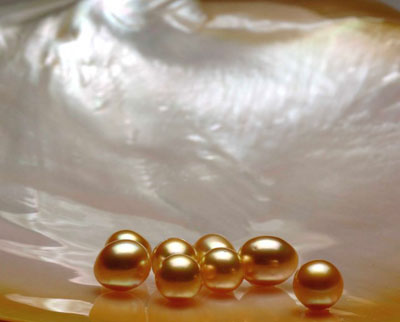
“These gems will eventually be handed down to our two daughters”, I told my husband , trying to justify the investment of the Golden pearls.
After my visit to the colorful world of the Pearl Farm in Palawan, I understood the value of this Ultimate Orient- the Philippine Golden Pearl.
Let me take you to a tour to the creation of this golden pearl.
This golden south sea pearl represents the triumph of collaboration between man and his environment. A pearl farm must , by necessity of its goal, remain a pristine environment. Oysters must live and thrive in clean, moving water, with constant tidal patterns and temperatures.
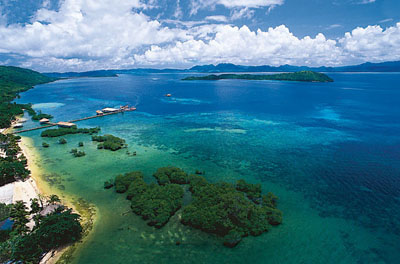

Imagine this. The creation of the golden pearl takes 323 precise steps and up to five years of dedicated care. The secret to producing these rare pearls is in the oyster – the gold-lipped Pinctada Maxima, which took years of research.
And I always thought the cultured pearl was created from an Oyster that just sits there on the ocean bed, virtually untouched until ready to be harvested.
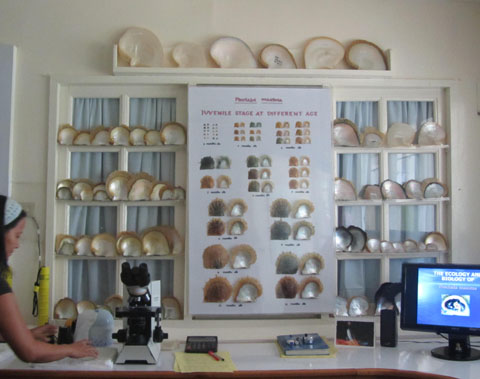
A gold-lipped pinctada maxima oyster is bred and grown for two to three years before being grafted. Another two to three years of being carefully monitored and nurtured while it grows the pearl follows before its precious cargo is harvested.
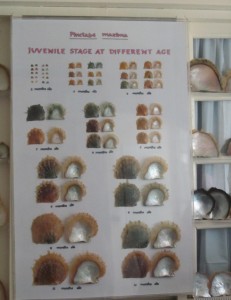
Click to enlarge the Juvenile stages of the oyster
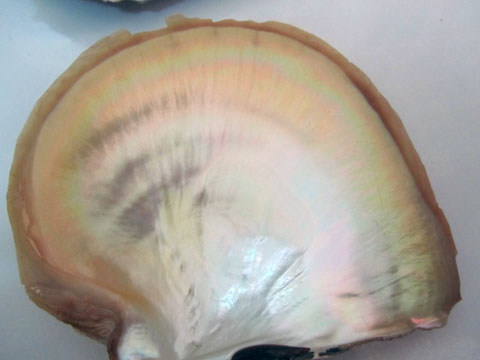
After a brief lecture on juvenile stages of an oyster, I got to see the hatchery where they formulate special “baby food” for the young oysters called “spats” for optimal growth.
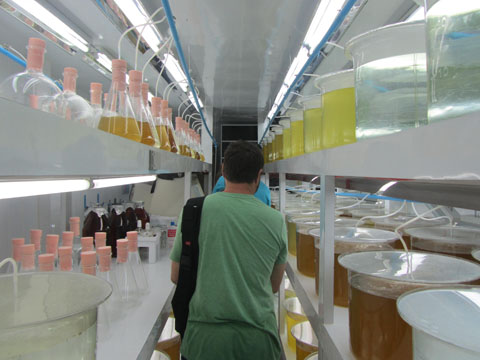
It takes several years for an oyster to fully develop or grow out. During this period, farm workers record all weather and marine variations that may affect young oysters, such as temperature, salinity and plankton density. Baby Oysters are placed in baskets or nets submerged at depth, allowing for undisturbed growth. With predators lurking around, only a certain percentage of the Oysters make it to adulthood.

The first step in the actual pearl culture is grafting or inserting a nucleus into an oyster’s gonad (sexual organ) to form a pearl. Oysters are nurtured and grown for some three years before the most suitable candidates are handpicked for operation based on color, strength, and growth potential for nuclei insertion.
Below the Oysters are washed and cleaned before they are grafted.

The formation of a pearl is actually a defense mechanism of the oyster where it encases an irritant , usually a grain of sand or particle with layers of aragonite crystal bound together by an organic protein glue called conchiolin.
This process is replicated in the laboratory by the master grafter who then inserts a round bead together with a piece of mantle or saibo from a donor oyster of the desired color into the gonad of an oyster.
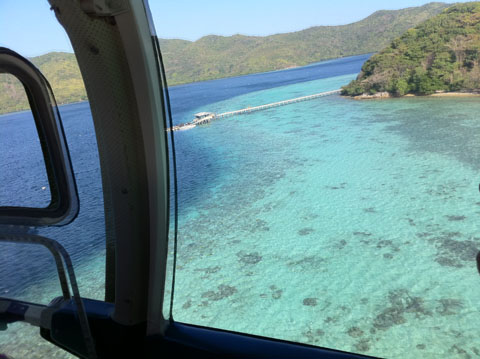
Just looking at the coral growth visible through the clear waters is evidence of the preservation of the farm’s natural environment. The corals are the prime indicators of the cleanliness, temperature and food supply in the ocean— factors critical to the survival of oysters and other marine organisms.

Another two to three years will pass for the pearl oyster to deposit layers of aragonite crystal around the inserted nuclei. The nuclei reminds me of white marbles and these are only grown in the Mississippi River. Oysters are placed in baskets which are regularly turned and cleaned to ensure the health of the mollusk. I also got to view the Xray room where the technicians monitored the pearl growth at their six to ten month operation.
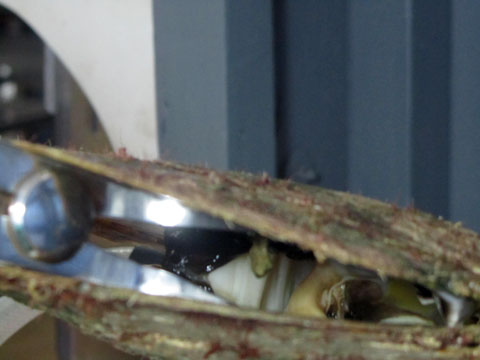
The harvesting of the golden pearl was so fascinating. Finally the magical moment arrives. After years of dedicated nurturing of the pearl farmer in partnership with Mother Nature, I got to hold just one of this golden pearl on my palm.
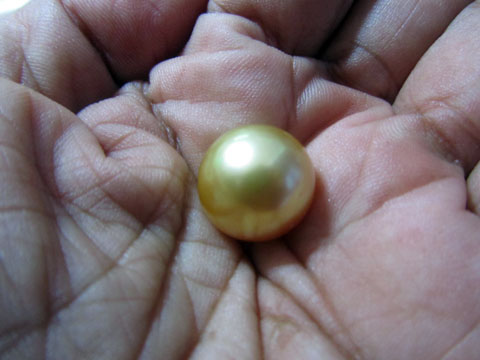
It is so beautiful. You can see the luster of the pearl just by the brilliance of its surface.
The master grafter decides if the oyster is healthy enough for a second insertion. If so, he inserts another bead nucleus (usually a larger one) and the process is repeated.
Each harvest is a miracle. Each pearl is unique.
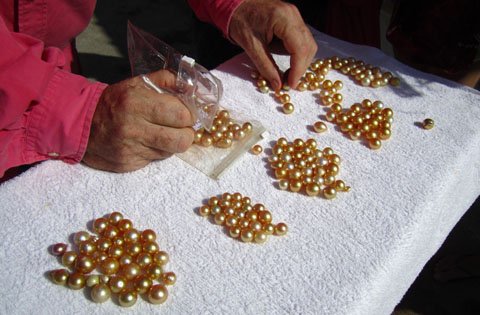
One cannot predict the colors of the pearl or its shape when it is harvested. Some are golden, champagne or almost white. Other pearls have irregular shapes.
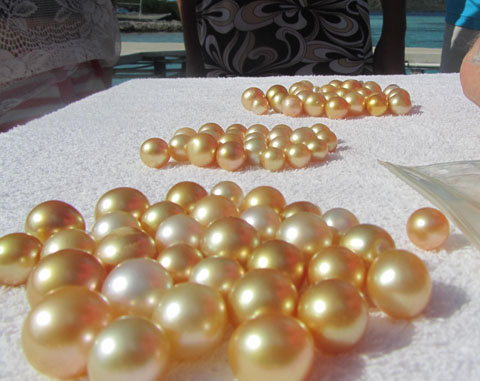
While round pearls are the most popular, some work of arts have been made from other natural shapes, including ovals, semi-circles and baroques.
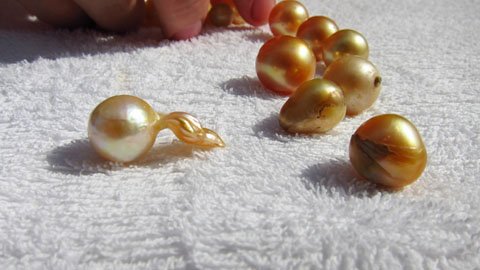
Now I understand why a strand of Golden South Sea Pearls are valuable. Consider the effort to complete a perfect strand. This means going through thousand of pearls to create a perfect 35. Incredible.
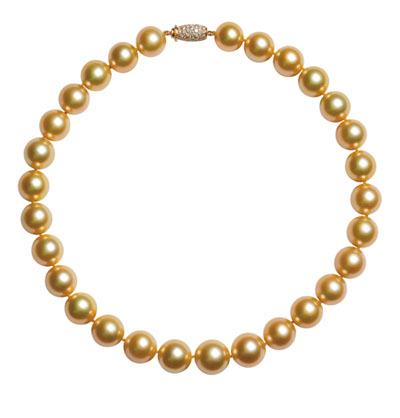
Now that I have seen the complexity of modern pearl farming, it is clear that farmers simply cannot engage in this activity without a strong reverence for nature. The marine biologists, the divers and the staff who live in this pearl farm have the passion for pearl farming. There lies the beauty of this Golden South Sea Pearls because it thrives in the harmony and success of this collaboration.
I want this “living gem” to be passed on to my girls. My girls will be reminded that a pearl can only come to be when man acknowledges his role as steward of this earth, and as protector of the many forces and processes that can produce something as beautiful as a pearl. I want to remind them that the pearl is an indicator of the health of the planet. It will remind them to keep watch of our environment for generations to come.
Also read my previous entry, Captivated by Palawan
Photos from Jewelmer website, Anna Oposa.
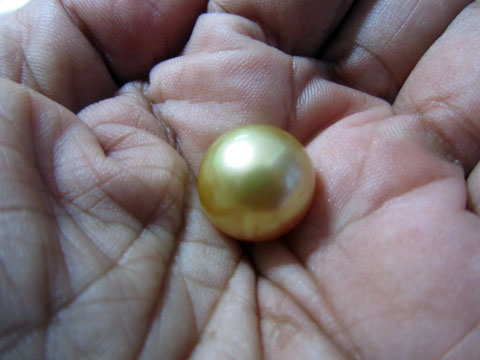
It’s really very beautiful, I wonder how much it can cost?